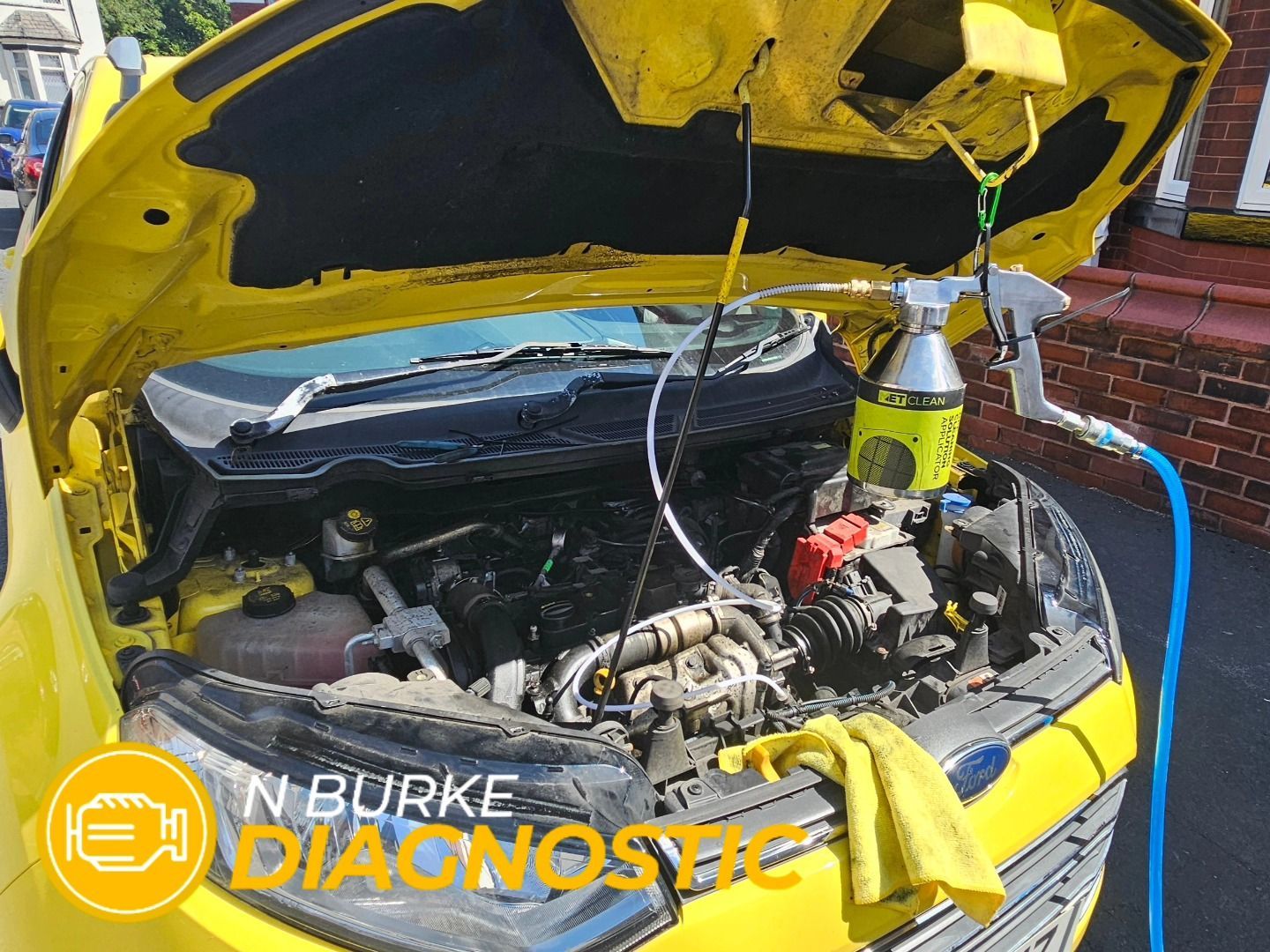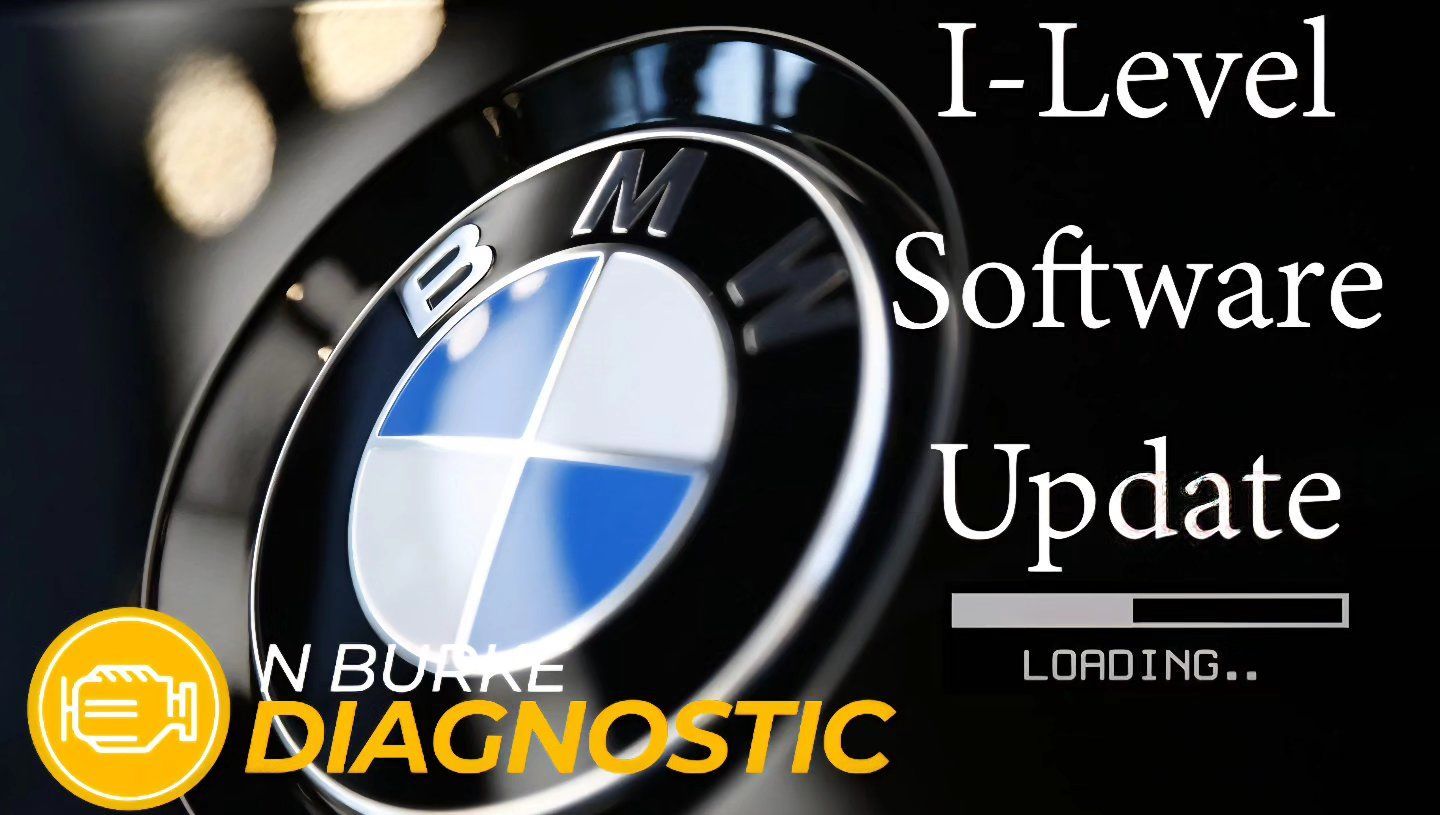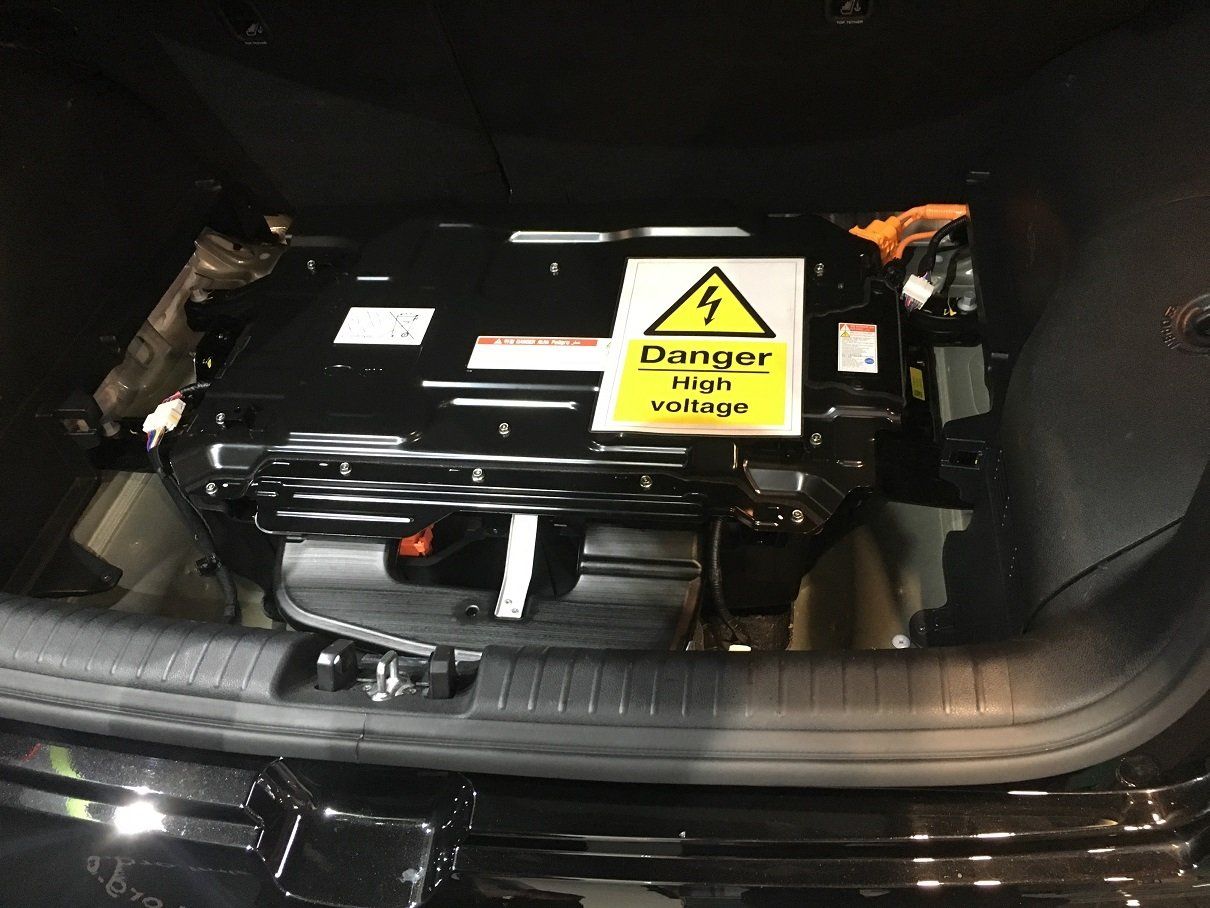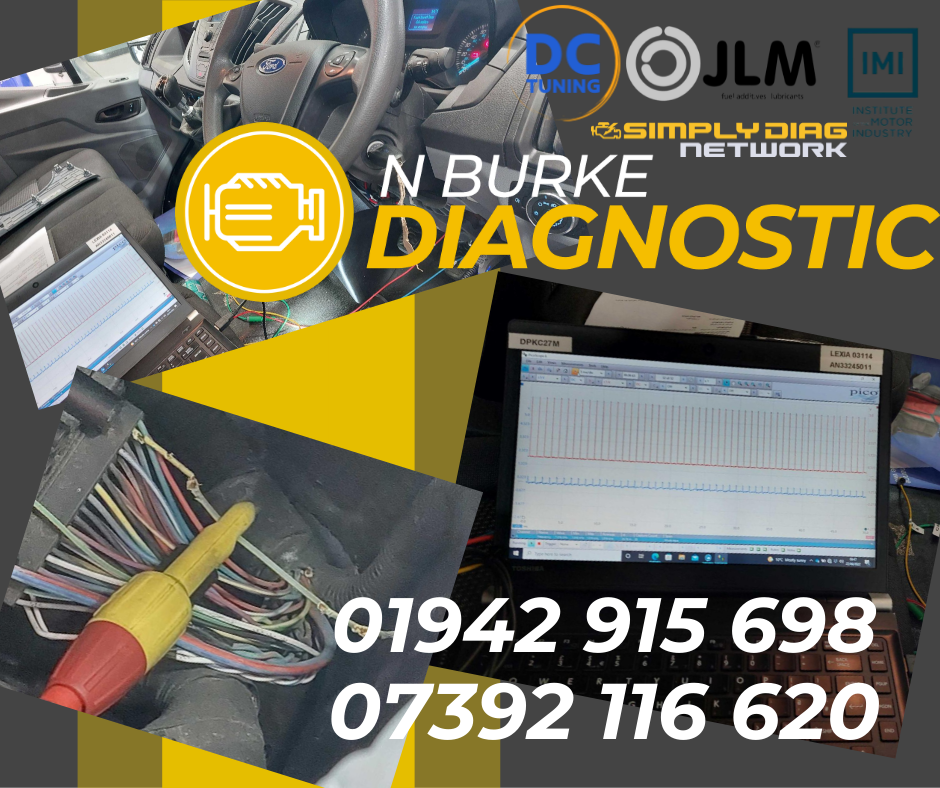Mitsubishi ASX Keyless Start Not Working
PH964493 • 16 May 2023
This is a subtitle for your new post

A very testing Mitsubishi ASX where the keyless start would not work unless the key was in the emergency key holder.
Very annoying indeed!
Vehicle was logging a B2419 Low Frequency Antenna Short.
Vehicle is equipped with 5 of these things, with logical approach and utilising the four rights of diagnostics, we found the cause of this troublesome issue with out the need to replace any components.
Are you experiencing an electrical head ache?
DPF issues driving you round the bend?
Want to get the most from your vehicle?
nathan@nburkediag.co.uk
01942 915 698
DPF Doctor Member
HEVRA Member
SimplyDiag Network Member
mobileECOtuning authorised agent

In the ever-evolving world of automotive engineering, vehicle performance is a key concern for many enthusiasts. One popular modification that car owners opt for is remapping – particularly, Stage 1 remapping. This modification, though often misunderstood, offers an array of benefits that can effectively enhance your driving experience. In this blog post, we will dive into what Stage 1 remapping entails and highlight the numerous advantages it provides. What is Stage 1 Remapping? Stage 1 remapping refers to the process of reprogramming your vehicle’s engine control unit (ECU) to optimize its performance. This can be done without any physical alterations to your car’s engine, making it an attractive option for many drivers. The goal of Stage 1 remapping is to enhance the vehicle’s performance through adjustments to fuel injection, ignition timing, and boost control. The Benefits of Stage 1 Remapping 1. **Increased Power and Torque** One of the most immediate benefits of Stage 1 remapping is the noticeable increase in power and torque. For instance, many drivers have observed increases in horsepower, ranging from 20% to 30%, depending on the model and specifications of the vehicle. This extra power can transform the driving experience, offering stronger acceleration and improved throttle response – perfect for those who enjoy spirited driving. 2. **Improved Fuel Efficiency** While you might think that a performance boost would come with a trade-off in fuel efficiency, Stage 1 remapping can actually lead to better miles per gallon (MPG) in various driving conditions. By optimizing the air-fuel mixture and altering the ECU settings, your vehicle can optimize fuel consumption, resulting in potential savings at the pump, especially for daily commuters. 3. **Enhanced Driving Experience** The improved power and efficiency from Stage 1 remapping contribute to a significantly enhanced driving experience. With a more responsive throttle, smoother acceleration, and reduced turbo lag (in turbocharged engines), drivers often report a sense of exhilaration and satisfaction at the wheel. This is particularly evident in vehicles that previously felt underpowered or sluggish. 4. **Customization Options** Every driver has unique preferences, and Stage 1 remapping can be tailored to suit individual requirements. Whether you want a sporty tune for spirited weekend drives or a focus on efficiency for everyday commuting, remapping can cater to your specific needs. Additionally, advanced tuners can apply a variety of drive modes, offering versatility for different driving conditions. 5. **Warranty Considerations** A commonly discussed concern is the impact of remapping on vehicle warranties. However, reputable tuning companies offer remapping solutions that are safe and can be reverted should you need to return your car for warranty service. Many manufacturers themselves are aware of aftermarket tuning and can even provide original maps, ensuring a service can be performed without a hitch. 6. **Cost-Effective Performance Enhancement** Compared to other performance modifications, Stage 1 remapping is one of the most cost-effective ways to improve your car’s performance. Rather than investing in expensive hardware upgrades, remapping allows you to unleash the potential of your vehicle with just a software update. This accessibility makes it an appealing option for both casual drivers and serious car enthusiasts alike. Conclusion Stage 1 remapping stands out as one of the most effective and accessible modifications for drivers seeking to enhance their vehicle’s performance. With benefits ranging from increased power and efficiency to a more exhilarating driving experience, the improvements can be quite transformative. For drivers looking to get the most out of their vehicles without engaging in complex modifications, Stage 1 remapping might just be the perfect gateway to an adrenaline-pumping journey. If you’re considering taking your driving experience to the next level, consult a reputable tuning company about Stage 1 remapping and discover the possibilities for your vehicle!

There has never been a better time to convert to electric power. With gas stations around the country running dry, it's the electric vehicle drivers who are getting the final laugh. Automobile companies and automobile manufacturers are pouring money into developing a new generation of electric vehicles. In fact, many automakers have committed to 'become green' in the future by creating electric-only automobiles. It's a significant step forward for the automotive sector as the UK shifts its focus to a more sustainable future by prohibiting the sale of new petrol and diesel vehicles by 2030. What does the future have in store for us? Electric vehicles are estimated to account for 20% of all new cars sold globally by 2025. Given the 2030 climate change deadline in the UK alone, this is expected to quadruple to 40%. While popular scepticism stems mostly from the idea that going electric is costly, things are beginning to change. The sheer volume of electric vehicles and batteries being produced currently reduces the cost of the entire process. It was recently announced that electric car chargers will be installed as standard in all new homes built in England. The legislation is a first in the globe, and it will ensure that chargers work as 'smart' gadgets, preventing the national grid from becoming overburdened.

What exactly is a DPF and how does it work? A DPF (Diesel Particulate Filter) is a soot trap positioned in the exhaust that traps dangerous soot particles and prevents them from entering the atmosphere. Because these soot particles accumulate over time, the DPF is designed to clean itself through a regeneration process. If the DPF is clogged, the vehicle is either unable to self-clean (due to a system/conditions issue) or the DPF can self-clean but not rapidly enough due to too much soot entering it (this would indicate a mechanical issue upstream of the DPF). To sum up... A DPF, or diesel particulate filter, is a self-cleaning filter that should take care of itself. What causes a DPF to become clogged? Short trips at low speeds are the most common cause of DPF clogs because the exhaust does not get hot enough to regenerate. It's critical to keep up with your vehicle's routine maintenance because failing to do so could cause the DPF to fail sooner. Some oils contain additives that can clog the filter, so choosing the proper one is critical. Low-quality fuels can cause blockages, and it's critical not to run your vehicle on low fuel too often, as this will cause it to avoid regeneration. What is a DPF (Diesel Particulate Filter) Warning Light? Is it true that a DPF warning light indicates that my DPF is blocked? A DPF warning light does not always indicate that there is a problem. It's normally an indication that the DPF needs to regenerate, so go for a long, steady drive at roughly 60 mph for at least 20 minutes (self cleaning process). The vehicle can do a regeneration if the light goes out after 20 minutes. If your symptoms persist, you should seek specialist help. What is a DPF Evaluation? The DPF assessment is the most important element of our job because it helps us to figure out what's causing your DPF issues. We can uncover any underlying concerns without any guesswork by following validated testing processes. We can successfully repair the car and give a first-time fix by addressing the root cause of the problem. After the vehicle has been restored, we will put it through an extended road test to ensure that it can now take care of itself and regenerate (self-cleaning process) properly. What does a DPF Clean entail, and why do I require one? DPF cleaning is a chemical-based process that we perform in-house to clear severely clogged DPFs. This approach should only be used AFTER the fundamental cause of the DPF blockage has been addressed; otherwise, the DPF will quickly become blocked again. Consider a flooded kitchen when you begin mopping the floor without first turning off the tap that is causing the sink to overflow. Should I clean my DPF with additives? DPF additives in the tank can be beneficial, but they can also be harmful if not used correctly. The majority of additives are meant as a preventative step to assist maintain your DPF clean, which is normally accomplished by raising the filter's temperature. It is critical to apply the optimum dosage of additives because overdosing might cause heat damage to the DPF.

With the latest on T Levels and the transition for Engineering and Manufacturing, we hope to provide insight into the future of technical and academic qualifications in this update. In light of the government's qualifications reform, we want to ensure that learners of all ages in the sector have access to the qualifications and skills they will need and benefit from. What exactly are T Levels? T Levels are a new post-16 technical study programme that, along with apprenticeships and A Levels, will become one of three main options for learners. These two-year programmes, which are equivalent to three A levels in size, were developed in collaboration with the government, business, and education to streamline technical education, meet the needs of industry, and prepare students for work. There will be 23 T Levels available in England only, each with its own set of route pathways and occupational specialism options. What does this mean for the automotive industry? The T Level that includes automotive repair is in Engineering and Manufacturing and will be available for the first time in September 2022. T Levels do not currently cover the Transport and Logistics sector. As part of the reform, the government confirmed that all qualifications that 'overlap' with T Levels would no longer receive government funding. Defunding qualifications that overlap with T Levels will be phased out over time. The government is expected to publish a preliminary list of qualifications for defunding in 2024 in early 2022. It intends to publish the final list by July 2022, giving providers at least six months to prepare.





